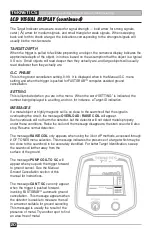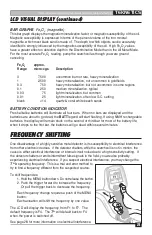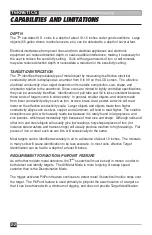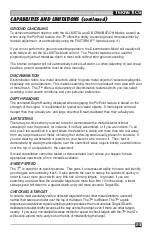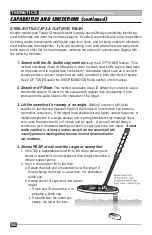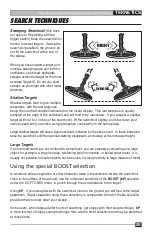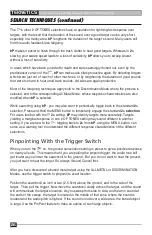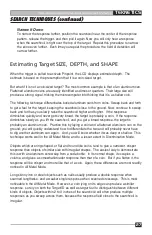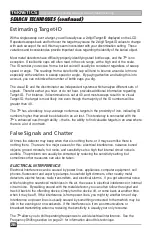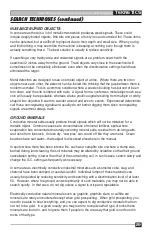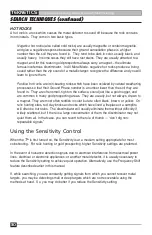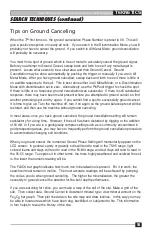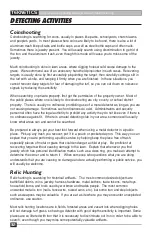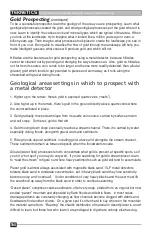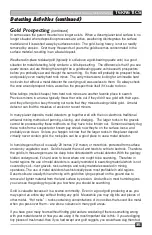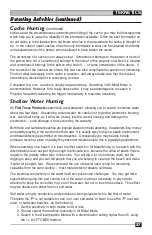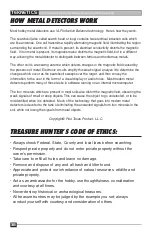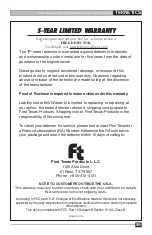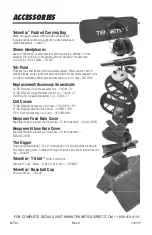
34
TEKNETICS
Comprehensive Operating Manual & Guide to Metal Detecting
Gold Prospecting
(continued)
To be a successful prospector, learn the geology of the area you are prospecting. Learn what
geological processes created the gold, and what geological processes put the gold where it is
now. Learn to identify the various rock and mineral types which are typical of that area. When
you look at the landscape, try to imagine what it looked like a million years ago or even a
billion years ago. Then imagine what processes took place to create the landscape you see in
front of you now. Being able to visualize the flow of gold through the landscape will help you
make intelligent guesses what zones will produce gold and which will not.
Hillsides are the best areas for gold prospecting using a metal detector, because hillsides
cannot be cleaned out by panning and dredging the way streams can. Also, gold on hillsides,
not far from its source vein, tends to be larger, and hence more readily detected, than alluvial
(placer) gold which tends to get pounded to pieces and worn away as it rolls along the
streambed with gravel during floods.
Geological areas settings in which to prospect with
a metal detector
1. Higher up in the terrain, there’s gold in exposed quartz veins (“reefs”).
2. Also higher up in the terrain, there’s gold in the ground directly above quartz veins where
the vein weathered in place.
3. Gold gradually moves down slope from its quartz vein source, carried by surface erosion
and soil creep. So there’s gold in that dirt.
4. Gold moving down slope eventually reaches a stream channel. There it is carried by water
especially during floods, along with gravel and sand sediments.
5. Rising floods deposit sediment, including gold, above and alongside the stream channel.
These sediments remain as terrace deposits when the floodwaters recede.
Alluvial (water flow) processes tend to concentrate what gold is present at specific spots, so if
you hit a “hot spot” you may do very well. If you’re searching for gold in stream placer, learn
to “read the stream” to figure out where heavy sediments such as gold will tend to accumulate.
Placer gold is almost always associated with magnetite black sand. VLF metal detectors
tolerate black sand in moderate concentration, but in heavy black sand they lose sensitivity,
become noisy, and “overload”. Under conditions of very heavy black sand the user must lift
the searchcoil up away from the black sand in order to continue searching.
“Desert placer” comprises coarse sediments, often very deep, eroded from an original but now
eroded “parent” mountain and deposited by flash floods and debris flows. In most cases
drainage patterns are constantly changing as flow channels become clogged with debris and
floodwaters find another course. On a given spot it’s often hard to say where on the mountain
the material came from. “Reading” the chaotic distribution of material in desert placer is an art
difficult to learn, but those few who learn it are privileged to dig where nobody else has dug.

